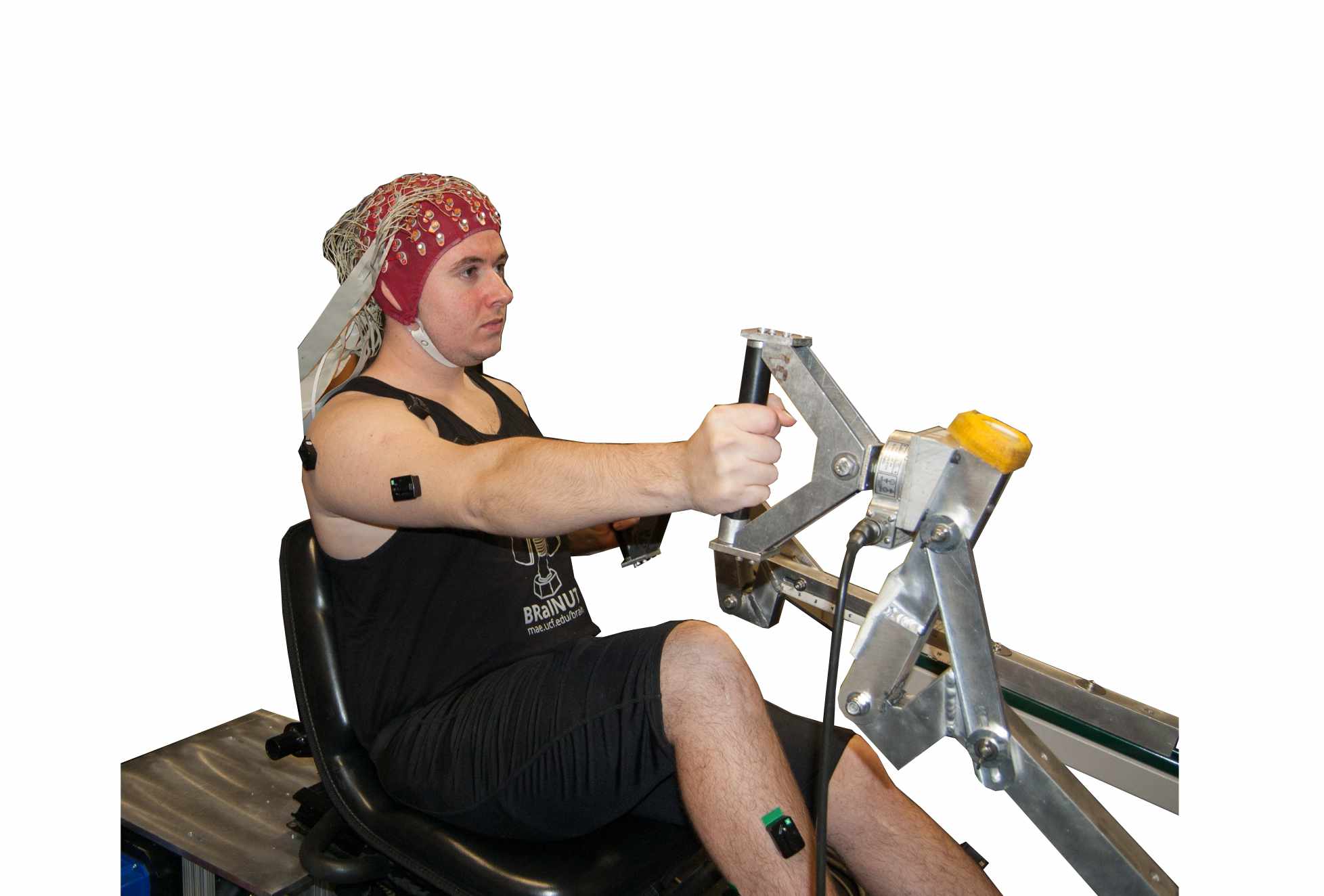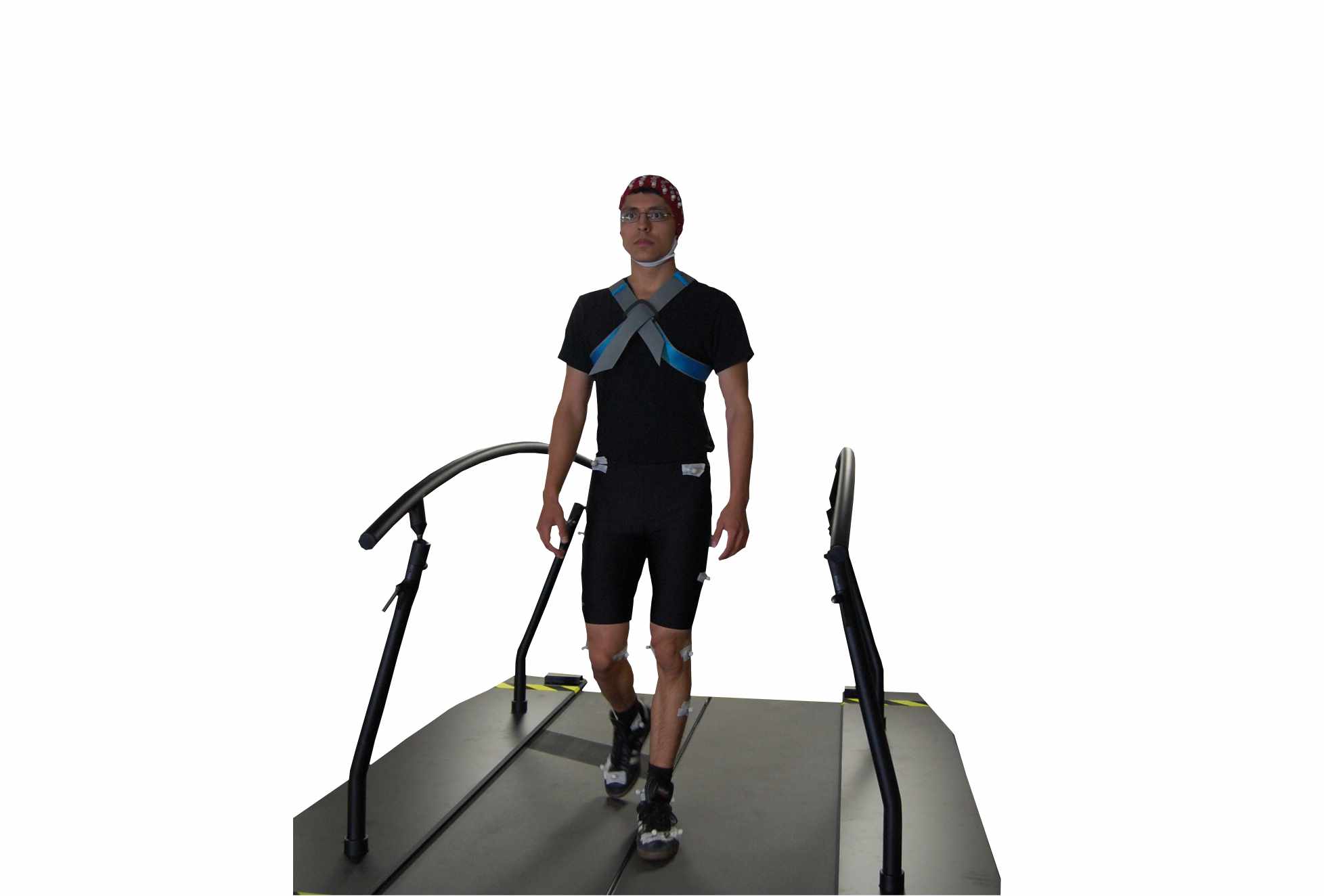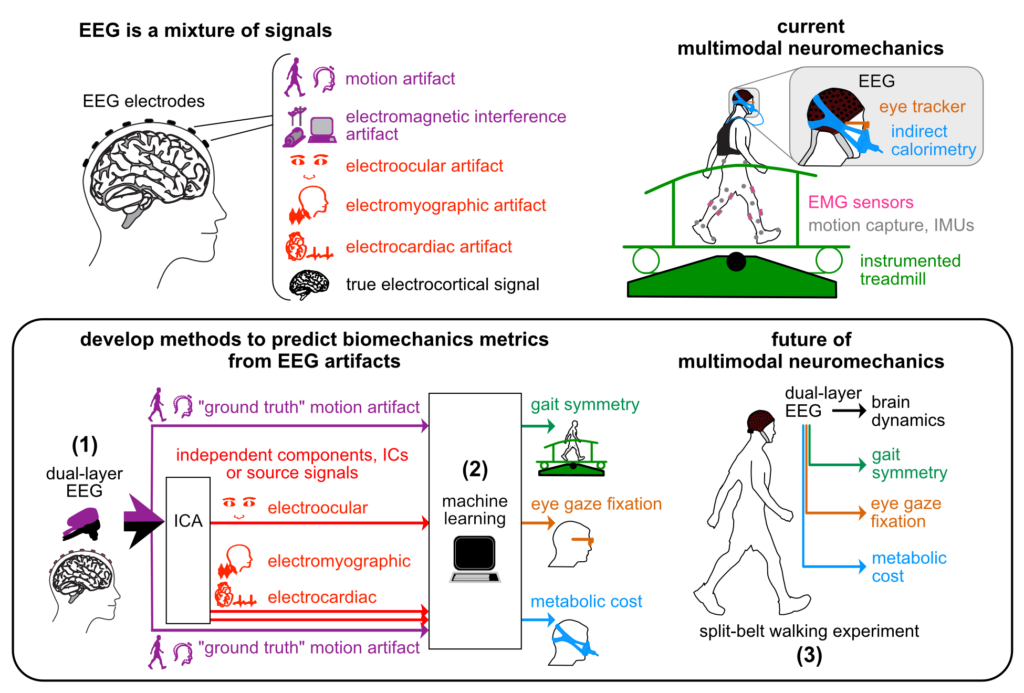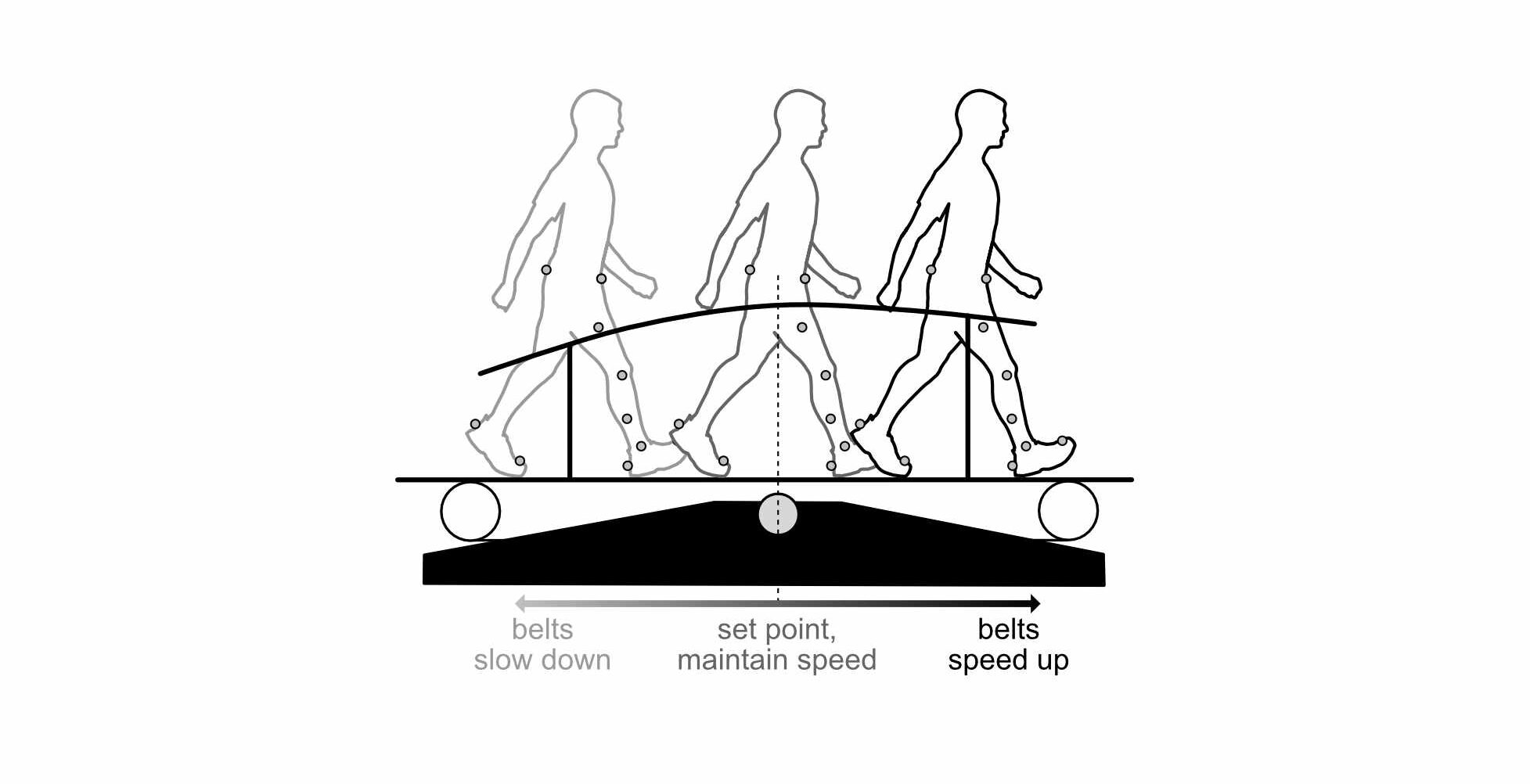Research
We are exploring the idea that perhaps rehabilitation is about brain dynamics more than biomechanics. We believe that robotic rehabilitation devices can be purposefully used to activate or inhibit specific brain areas at specific times to help people move and walk better. Technology has advanced so that it is now possible to study what the brain is doing when humans walk and move. We can measure the electrical activity on the scalp, electroencephalography (EEG) during movement and use computer algorithms to estimate where and when areas in the brain are active during walking. We are exploring a spectrum of tasks related to human locomotion – walking, recumbent stepping, and cycling. Additionally, we are developing a toolbox of perturbations that can be implemented with robotic devices across the spectrum of locomotor tasks to elicit specific underlying brain dynamics involved during walking and balance. For people with difficulties walking, we hope to help people walk faster, walk more economically, have improved balance, and be able to move to adapt to unexpected situations.
Adaptation of brain and body responses to perturbations during gait in young and older adults
More and more people are living longer, which is good news because it means we get to spend more time with our family and friends. But, as people get older, the brain and body changes, and for many older adults, these changes make walking and balancing difficult.
The aim of this research is to identify and quantify brain activity patterns as young and older adults adapt to perturbations during walking that create mild losses of balance and to perturbations during recumbent stepping that create small changes in resistance. This research will also help determine how aging affects the ability to adapt to different perturbations (timing, magnitude, direction) during two locomotor tasks.
CAREER: Leveraging electroencephalography (EEG) artifacts for multimodal neuromechanics
This NSF CAREER Award will develop new technologies and employ machine learning to establish that EEG alone can be used for multimodal neuromechanics and will advance knowledge about walking control from a multimodal neuromechanics perspective that integrates brain dynamics, gait symmetry, eye gaze, and metabolic cost.
Brain dynamics of losses of balance during walking
The aim of this research is to determine how different magnitudes of side-to-side perturbations and fowards-backwards perturbations affect walking balance and the brain activity underlying the ability to adapt to these perturbations in young and older adults.
Brain dynamics of walking in older adults
The aim of this research is to establish a reference set of brain dynamics data of young and older adults walking using a range of speeds including self-selected speeds, on different slopes.
Interactive art for lower limb neurorehabilitation
paintboard
We are integrating lower limb tasks with interactive art interfaces to investigate whether engaging sensorimotor processes that involve creativity and self-exploration of one's movement capabilities can be beneficial for lower limb rehabilitation.
Gait dynamics of self-paced treadmill walking
Self-paced treadmills are becoming more commonplace. To better interpret gait dynamics during self-paced treadmill walking, we are investigating the effects of self-paced treadmill controllers on gait dynamics such as fluctuations in walking speed and gait variability when walking on different slopes.




